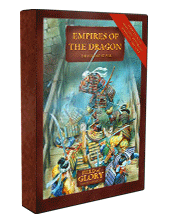Rise of Rome
This army guide covers the armies of Rome and its enemies and allies from 280 to 25 BC. During this period Rome expanded from Italy to gain an empire including the whole of the Mediterranean and the surrounding regions.
By 280 Rome had conquered its main Italian rivals, including the Etruscans and Samnites, controlling most of Italy by a network of forced alliances. The Greek city of Tarentum, in the heel of Italy, appealed to the Hellenistic king Pyrrhos of Epeiros for aid against Rome. This was the first clash between the legions and the Hellenistic pike phalanx. Although Pyrrhos won hard-fought victories, he soon lost interest and moved on elsewhere, allowing Rome to complete its control of southern Italy.
In 264 a dispute over the city of Messina at the north-eastern tip of Sicily resulted in the 1st Punic War against Carthage. The war lasted until 241, ending in Roman victory. Carthage was forced to surrender Sicily to Rome. In 237 Corsica and Sardinia were also annexed.
Carthage consoled itself by conquering a new empire in Spain. In 218 their general, Hannibal, instigated the 2nd Punic War. He invaded Italy and inflicted numerous severe defeats on the Roman armies. Things looked bleak for Rome. Hannibal never managed to capture Rome itself, however, and the Romans were not quitters. They gradually managed to contain Hannibal in the far south of Italy, while in Spain their armies defeated the Carthaginians and conquered their Spanish empire. Eventually the Romans invaded North Africa to threaten Carthage itself. Hannibal was recalled, but was defeated at Zama in 202. The former Carthaginian empire was reduced to modern Tunisia.
In 215, during the 2nd Punic war, Rome first came into conflict with the Hellenistic kingdom of Macedon to the north of Greece. After the 4th Macedonian war, in 148, Macedon was annexed by Rome.
In 192, an attempt by the eastern Hellenistic Seleucid kingdom to intervene in Greece provoked Roman intervention. The Seleucids were defeated in two battles, and lost their territories in Asia Minor, which were parceled out amongst Rome’s allies.
In 149 Rome found pretexts to declare war against Carthage again, and after the short 3rd Punic War destroyed Carthage and annexed her remaining territories.
In 133, King Attalos III of Pergamon bequeathed his kingdom in western Asia Minor to Rome. In 88, an attempt to check the expansionist ambitions of Mithridates of Pontus resulted in initial disaster for the Romans with the loss of the whole of Asia Minor and much of Greece. However, the Roman counterattack swiftly defeated the Pontic armies and swept Mithridates out of his newly conquered territories. Two further wars led to the final defeat of Mithridates in 63 and further territorial gains for Rome and her client allied kingdoms. The Syrian remnants of the Seleucid kingdom were annexed at this time.
From 58 to 51 the Romans, under Julius Caesar, conquered Gaul (modern France). Britain was also invaded briefly, but to no lasting effect. In 53, an attempt to invade the Iranian Parthian kingdom in the east resulted in disaster at the battle of Carrhae.
From 49 a series of civil wars wracked the Roman empire. In the last phase, the Hellenistic Ptolemaic kingdom of Egypt became involved on the losing side, with the result that Egypt was annexed in 30 BC. Following this, Octavian, great-nephew and adoptive heir of Julius Caesar, was in sole control of the Roman world, becoming the first emperor, under the name of Augustus. By this time the Roman world included Italy, Spain, Gaul, North Africa, Greece, Asia Minor, Syria and Egypt. A series of small client kingdoms in the east acted as buffers against Parthia.
We have organized the armies in approximately the order the states they cover first came into military contact with Rome and they are listed below:
Mid Republican Roman
Late Republican Roman
Gallic
Pyrrhic
Later Carthaginian
Illyrian
Ancient Spanish
Later Macedonian
Attalid Pergamene
Numidian or Early Moorish
Later Seleucid
Later Ptolemaic
Pontic
Spartacus Slave Revolt
Early Armenian
Parthian
Later Jewish
Bosporan



 Cart (0)
Cart (0)
